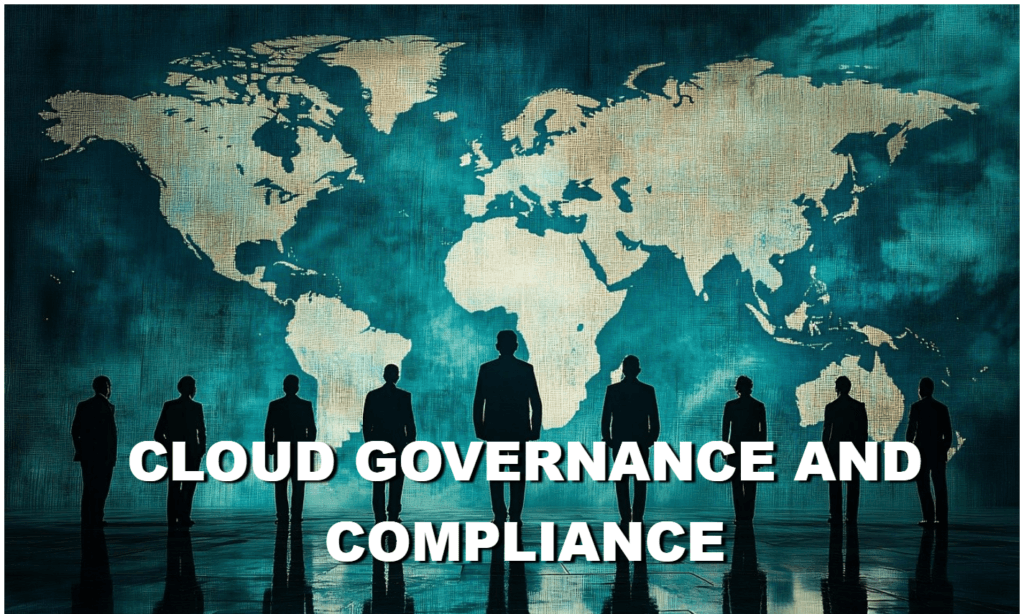Welcome to Technology Moment, In today’s fast-paced digital world, the cloud has become the cornerstone of innovation and efficiency. But with great power comes great responsibility, especially when it comes to securing the vast amounts of data and operations that reside in the cloud. Enter the Cloud Security Engineer—a vital role that ensures our cloud-based environments remain safe from prying eyes and malicious threats. As businesses continue to embrace cloud technologies, the demand for skilled professionals to safeguard these virtual landscapes has never been greater. In this edition of Technology Moment, we’ll dive into the critical responsibilities, skills, and future of Cloud Security Engineers, exploring how they keep our digital world secure and sound.
What is Cloud Security?
Cloud security refers to the measures, technologies, and best practices designed to protect data, applications, and services hosted in the cloud. As businesses increasingly rely on cloud computing for their operations, safeguarding this environment has become crucial. Cloud security ensures the confidentiality, integrity, and availability of data stored in cloud infrastructures.
Imagine your sensitive business data as a treasure chest. Now, think of cloud security as the lock, guard, and security system that protect that treasure from thieves. It involves a combination of strategies, tools, and policies to fend off cyber threats like data breaches, malware attacks, and unauthorized access. Whether it’s a private, public, or hybrid cloud, the principles of cloud security apply universally.
The Role of a Cloud Security Engineer
A Cloud Security Engineer is the unsung hero behind the scenes, ensuring that a company’s cloud infrastructure is fortified against cyber threats. These professionals are tasked with designing, implementing, and managing security protocols to protect cloud environments. They are the watchful guardians who ensure that the data and applications stored in the cloud are safe from malicious actors.
Think of a Cloud Security Engineer as the modern-day equivalent of a castle’s chief security officer. Just as the officer would oversee the defenses of the castle, a Cloud Security Engineer oversees the digital defenses of an organization’s cloud environment. They constantly monitor for vulnerabilities, implement security measures, and respond to incidents swiftly to minimize damage. Their role is pivotal in maintaining trust and reliability in cloud services.
By understanding the basics of cloud security and the critical role played by Cloud Security Engineers, we can appreciate the importance of this field in today’s digital landscape. This introduction sets the stage for a deeper dive into the intricacies of cloud security and the expertise required to excel in this dynamic and vital profession.
Table of Contents
Understanding Cloud Security
The proliferation of cloud services, ensuring robust security has become paramount. Organizations rely on cloud environments for storage, processing, and managing vast amounts of data, often sensitive or critical to operations. The importance of cloud security cannot be overstated as it safeguards against unauthorized access, data breaches, and other cyber threats that can lead to financial loss, reputational damage, and regulatory penalties.
Common Threats in Cloud Environments
Cloud environments face a variety of threats that can compromise security:
- Data Breaches: Unauthorized access to sensitive data stored in the cloud is a primary concern. This can occur due to vulnerabilities in the cloud provider’s infrastructure or through poor security practices by the cloud customer.
- Account Hijacking: Attackers may gain control of cloud accounts through phishing, credential stuffing, or exploiting vulnerabilities, enabling them to access and manipulate data and applications.
- Insider Threats: Employees or other insiders with access to cloud resources may intentionally or unintentionally compromise security by misconfiguring settings, abusing their access, or leaking information.
- Insecure APIs: Application Programming Interfaces (APIs) are essential for cloud services to communicate. If not properly secured, they can become gateways for attackers to exploit vulnerabilities and gain unauthorized access.
- Misconfiguration: Misconfigured cloud settings, such as improperly set permissions or unprotected storage buckets, can expose sensitive data and resources to the public or malicious entities.
- Denial of Service (DoS) Attacks: Attackers can overwhelm cloud services with excessive traffic, causing disruptions and making resources unavailable to legitimate users.
- Advanced Persistent Threats (APTs): These are prolonged and targeted cyberattacks where an intruder gains access to a network and remains undetected for an extended period, often stealing data or conducting surveillance.
Key Responsibilities of a Cloud Security Engineer
Monitoring and Managing Security Measures
One of the primary responsibilities of a Cloud Security Engineer is to continuously monitor and manage the security measures in place within a cloud environment. This involves implementing robust security controls to protect data and applications from unauthorized access and potential breaches. Cloud Security Engineers use various tools and technologies to oversee network traffic, detect anomalies, and ensure that security policies are enforced consistently across all cloud platforms.
Incident Response and Disaster Recovery
In the event of a security breach or any other incident that threatens the integrity of the cloud infrastructure, Cloud Security Engineers are on the front lines of the response team. They must quickly identify the source and scope of the breach, contain it to prevent further damage, and remediate the affected systems. Additionally, they develop and maintain disaster recovery plans to ensure that critical data and services can be restored promptly in case of a catastrophic failure. This involves regular testing and updating of recovery protocols to minimize downtime and data loss.
Compliance and Risk Management
Cloud Security Engineers play a crucial role in ensuring that their organization’s cloud operations comply with relevant industry standards and regulations. They must stay updated on the latest compliance requirements, such as GDPR, HIPAA, and PCI-DSS, and implement measures to adhere to these standards. This involves conducting regular audits, risk assessments, and vulnerability assessments to identify potential security gaps and ensure that appropriate controls are in place. By effectively managing risks, Cloud Security Engineers help organizations avoid legal penalties and build trust with their customers and stakeholders.
Qualifications and Skill Set Needed for a Cloud Security Engineer
Becoming a successful cloud security engineer requires a mix of technical prowess, industry knowledge, and personal attributes. Here’s a detailed breakdown of the skills and qualifications that are essential:

Technical Skills
- Cloud Platform Proficiency
- AWS, Azure, Google Cloud: Understanding the major cloud platforms is crucial. Each has its own set of security tools and protocols.
- Cloud Architecture: Knowledge of how to design secure cloud infrastructure, including virtual networks, storage, and compute resources.
- Security Tools and Technologies
- Firewalls and VPNs: Expertise in setting up and managing firewalls and Virtual Private Networks (VPNs) to protect cloud resources.
- Encryption: Knowledge of data encryption methods, both in transit and at rest.
- Identity and Access Management (IAM): Experience with IAM services to manage user permissions and access controls.
- Network Security
- Network Protocols: Understanding of TCP/IP, DNS, HTTP, and other network protocols.
- Intrusion Detection and Prevention Systems (IDPS): Ability to deploy and manage IDPS to monitor for malicious activities.
- Compliance and Regulatory Standards
- GDPR, HIPAA, SOC 2: Familiarity with industry standards and regulations to ensure cloud environments comply with legal requirements.
- Audit and Reporting: Skills in conducting security audits and generating compliance reports.
Soft Skills
- Analytical Thinking
- Problem-Solving: Ability to analyze security threats and vulnerabilities, and develop effective mitigation strategies.
- Attention to Detail: Keen eye for identifying potential security loopholes and ensuring robust protection measures.
- Communication Skills
- Technical Documentation: Ability to document security policies, procedures, and incidents clearly.
- Collaboration: Effective communication with other IT teams, management, and external stakeholders to ensure comprehensive security.
- Adaptability
- Staying Updated: Keeping up with the latest security trends, threats, and technologies in the ever-evolving field of cloud security.
- Quick Learning: Ability to quickly understand and implement new security tools and techniques.
Qualifications
- Educational Background
- Degree in Computer Science or Related Field: A bachelor’s degree in computer science, information technology, or a related field is often required.
- Advanced Degrees: A master’s degree or specialized certifications can be advantageous.
- Certifications
- The Certified Cloud Security Professional (CCSP) credential is dedicated to cloud security alone.
- Certified Information Systems Security Professional (CISSP): A broader certification that includes cloud security topics.
- AWS Certified Security – Specialty, Azure Security Engineer Associate, Google Professional Cloud Security Engineer: Certifications specific to major cloud platforms.
- Experience
- Hands-on Experience: Practical experience in managing cloud security, ideally within a professional setting.
- Project Management: Experience in overseeing security projects from inception to completion.
Educational Pathways
1. Introduction to Educational Pathways
- Overview of Importance: Discuss why a structured educational pathway is crucial for becoming a cloud security engineer. Mention the benefits of having a clear educational and professional roadmap.
2. High School Foundation
- Importance of STEM Subjects: Highlight the significance of subjects like Mathematics, Computer Science, and Physics in high school. These subjects lay the groundwork for more advanced studies in technology and security.
- Extracurricular Activities: Encourage participation in tech clubs, coding boot camps, and cybersecurity competitions to build foundational knowledge and interest.
3. Undergraduate Degree
- Relevant Degrees: Discuss the various undergraduate degrees that are beneficial, such as Computer Science, Information Technology, Cybersecurity, and Software Engineering.
- Core Subjects to Focus On: Identify key subjects within these degrees that are particularly relevant, such as Networking, Operating Systems, Cryptography, and Software Development.
- Internships and Practical Experience: Stress the importance of gaining hands-on experience through internships, co-op programs, and lab work.
4. Certifications and Professional Courses
- Importance of Certifications: Explain why industry-recognized certifications are essential. They validate skills and knowledge, making candidates more competitive in the job market.
- Recommended Certifications: List and describe key certifications such as:
- CompTIA Security+
- Certified Information Systems Security Professional (CISSP)
- Certified Cloud Security Professional (CCSP)
- AWS Certified Security – Specialty
- Google Professional Cloud Security Engineer
- Online Courses and Training: Recommend platforms like Coursera, Udemy, and LinkedIn Learning for relevant courses.
5. Graduate Studies (Optional but Beneficial)
- Advanced Degrees: Discuss the benefits of pursuing a Master’s degree in Cybersecurity, Cloud Computing, or Information Security for those aiming for higher-level positions or specialized roles.
- Research Opportunities: Mention the importance of engaging in research projects or thesis work related to cloud security.
6. Continuous Learning and Professional Development
- Keeping Up with Trends: Emphasize the need for continuous education through workshops, webinars, conferences, and professional networks to stay updated with the latest trends and technologies in cloud security.
- Professional Organizations: Suggest joining organizations like the Information Systems Security Association (ISSA) and (ISC)² for networking and ongoing education.
7. Soft Skills and Interdisciplinary Knowledge
- Communication Skills: Highlight the importance of strong communication skills for explaining complex security issues to non-technical stakeholders.
- Project Management and Business Acumen: Discuss how knowledge in these areas can be beneficial for leading security projects and understanding the broader business context.
Tools and Technologies Used by Cloud Security Engineers
Cloud security engineers employ a wide array of tools and technologies to ensure the safety and integrity of cloud environments. Here’s a detailed explanation of some of the most critical tools and technologies they use:

1. Cloud Security Platforms:
- AWS Security Hub: A comprehensive view of your security alerts and compliance status across AWS accounts.
- Across hybrid cloud workloads, Microsoft Azure Security Center offers sophisticated threat prevention and unified security administration.
- Google Cloud Security Command Center: Helps in identifying and remediating potential risks across Google Cloud services.
2. Identity and Access Management (IAM):
- AWS Identity and Access Management (IAM): Controls access to AWS services and resources securely.
- Azure Active Directory (AD): Manages user identities and governs access to applications and resources.
- Google Cloud IAM: Defines who (identity) has what access (role) to which resource.
3. Encryption Tools:
- AWS Key Management Service (KMS): Easily create and control the encryption keys used to encrypt data.
- Azure Key Vault: Preserves private keys and cryptography secrets utilized by cloud services and apps.
- Google Cloud Key Management Service: Manages encryption keys for your cloud services.
4. Security Information and Event Management (SIEM):
- Splunk: Provides data collection, analysis, and monitoring for security-related events.
- IBM QRadar: Detects and prioritizes threats with actionable intelligence.
- Azure Sentinel: A scalable, cloud-native SIEM solution for intelligent security analytics.
5. Endpoint Security:
- CrowdStrike: Delivers endpoint protection through real-time monitoring and threat detection.
- Symantec Endpoint Protection: Provides advanced threat protection for cloud, on-premises, and hybrid environments.
- Carbon Black: Offers endpoint detection and response (EDR) for threat hunting and incident response.
6. Network Security:
- AWS Security Groups and NACLs (Network Access Control Lists): Provides control over inbound and outbound traffic to AWS resources.
- Azure Network Security Groups (NSGs): Allows you to filter network traffic to and from Azure resources.
- Google Cloud VPC Service Controls: Enhances security by defining a security perimeter around Google Cloud resources.
7. Vulnerability Management:
- Nessus: Identifies vulnerabilities, configuration issues, and malware across a variety of environments.
- Qualys: Provides cloud-based security and compliance solutions, including vulnerability management.
- Rapid7 InsightVM: Offers real-time vulnerability management and prioritization.
8. Intrusion Detection and Prevention Systems (IDPS):
- Snort: An open-source network intrusion prevention system capable of real-time traffic analysis and packet logging.
- Suricata: An IDS/IPS engine for real-time intrusion detection and prevention.
- AWS GuardDuty: Provides continuous security monitoring to detect threats.
9. Automation and Orchestration:
- Terraform: An open-source infrastructure as code software tool to automate the provisioning of infrastructure.
- Ansible: Offers task automation, application deployment, and configuration management automation.
- Developers and companies can easily establish and manage a group of connected AWS resources with the help of AWS CloudFormation.
10. Compliance Management:
- AWS Config: Provides an inventory of your AWS resources and configuration history for compliance auditing.
- Azure Policy: Enforces organizational standards and assesses compliance at-scale.
- Google Cloud Compliance Reports Manager: Offers access to audit and compliance reports.
Best Practices for Cloud Security
Ensuring robust cloud security involves more than just implementing a few tools and policies; it requires a comprehensive approach. Here are some best practices to keep your cloud environment secure:
Principle of Least Privilege
The Principle of Least Privilege (PoLP) is a fundamental security concept that states users and systems should have only the minimum levels of access necessary to perform their functions. By limiting access rights, you minimize the potential damage that can occur if an account is compromised. Here’s how to implement this principle:
- Define Roles Clearly: Determine the specific needs of each role within your organization. This helps in assigning appropriate permissions.
- Use Role-Based Access Control (RBAC): Implement RBAC to assign permissions based on roles rather than individuals. This simplifies management and enforcement of least privilege.
- Regularly Review Permissions: Periodically audit user access levels to ensure they are still appropriate.
- Enforce Temporary Privileges: For tasks requiring elevated permissions, use temporary access controls and ensure they are revoked after the task is completed.
Regular Security Audits
Conducting regular security audits helps identify vulnerabilities, ensure compliance, and assess the effectiveness of existing security measures. Here’s a breakdown of how to conduct effective audits:
- Schedule Audits: Create a regular audit schedule based on your organization’s risk profile.
- Use Automated Tools: Leverage automated security audit tools that scan for common vulnerabilities and compliance issues. These tools can provide valuable insights quickly.
- Perform Manual Checks: Automated tools are helpful, but manual reviews are essential for identifying complex security issues and assessing the effectiveness of controls.
- Document Findings: This documentation can be critical for compliance and for improving your security posture.
Incident Response Planning
Incident response planning involves preparing for and managing security incidents effectively. A well-defined plan ensures that your organization can respond quickly and minimize damage. Here’s how to prepare:
- Develop an Incident Response Plan (IRP): Create a comprehensive IRP that outlines procedures for detecting, responding to, and recovering from security incidents.
- Define Roles and Responsibilities: Assign specific roles and responsibilities to team members involved in incident response. Ensure everyone understands their role and the chain of command.
- Conduct Training and Drills: Regularly train your team on the incident response plan and conduct simulation exercises to ensure readiness. This helps in refining processes and improving coordination.
- Review and Update: After an incident, review the response and update the IRP based on lessons learned. This ensures continuous improvement in your incident response capabilities.
Challenges Faced by Cloud Security Engineers
Evolving Threat Landscape
The landscape of cyber threats is constantly shifting, presenting a significant challenge for Cloud Security Engineers. New vulnerabilities and attack vectors emerge regularly as attackers refine their techniques and tools. This dynamic environment demands continuous vigilance and adaptation. Cloud Security Engineers must stay ahead of these threats by:
- Keeping Abreast of New Threats: Regularly updating their knowledge about emerging threats and vulnerabilities through threat intelligence feeds, industry news, and security advisories.
- Updating Security Measures: Constantly refining and updating security protocols, tools, and practices to counteract the latest threats.
Complexity of Multi-Cloud Environments
Many organizations use multiple cloud service providers to meet their diverse needs, creating a multi-cloud environment. This complexity introduces several challenges:
- Unified Security Management: Securing data across various cloud platforms requires a unified strategy that integrates different security controls and policies. This can be challenging due to the differing security tools and interfaces provided by each cloud vendor.
- Consistency in Policies: Maintaining consistent security policies and configurations across multiple cloud platforms is crucial yet challenging. Misconfigurations can lead to vulnerabilities and data breaches.
- Interoperability Issues: Ensuring seamless interoperability between different cloud services while maintaining security can be complex, requiring extensive knowledge of each platform’s capabilities and limitations.
Balancing Security and Usability
One of the primary challenges is balancing robust security measures with user convenience and productivity. Striking the right balance involves:
- Implementing Strong Security Controls: Ensuring that security measures like multi-factor authentication (MFA) and encryption do not overly hinder user access and workflow.
- User Training: Educating users about security best practices and the importance of security measures can help mitigate resistance and foster a security-conscious culture.
Data Privacy and Compliance
Organizations must navigate complex legal requirements and ensure their cloud security practices align with these regulations:
- Understanding Regulations: Different regulations have specific requirements for data handling and security. Cloud Security Engineers must be well-versed in these regulations to ensure compliance.
- Implementing Compliance Controls: Setting up and maintaining controls that meet regulatory standards, such as data encryption and access logging, is essential but can be cumbersome.
Incident Response and Management
Responding to and managing security incidents in a cloud environment presents unique challenges:
- Incident Detection: Detecting anomalies and potential breaches can be difficult in a cloud environment due to the volume of data and the distributed nature of cloud services.
- Incident Response Plans: Developing and executing effective incident response plans tailored to the cloud environment is crucial for minimizing damage and recovery time.
- Coordination: Coordinating response efforts across different cloud services and internal teams can be complex, requiring clear communication and well-defined procedures.
Securing DevOps and CI/CD Pipelines
With the rise of DevOps and continuous integration/continuous deployment (CI/CD) pipelines, securing these processes has become a critical challenge:
- Integrating Security in Development: Ensuring that security is integrated into the development lifecycle, from coding to deployment, requires collaboration with development teams and the implementation of security tools in CI/CD pipelines.
- Managing Code Vulnerabilities: Identifying and addressing security vulnerabilities in code before deployment is crucial to preventing potential security issues.
Resource Constraints and Budgeting
Organizations often face constraints in resources and budgets, impacting the ability to implement comprehensive cloud security measures:
- Budget Limitations: Limited budgets may restrict the acquisition of advanced security tools and technologies, making it challenging to maintain a robust security posture.
- Resource Allocation: Allocating sufficient resources, including skilled personnel and technology, to address cloud security needs while balancing other IT priorities can be difficult.
Cloud Service Provider Security
Relying on cloud service providers introduces challenges related to the security of the provider’s infrastructure:
- Shared Responsibility Model: Understanding and managing the shared responsibility model, where both the cloud provider and the customer have specific security obligations, can be complex.
- Provider-Specific Risks: Each cloud provider may have unique security features and vulnerabilities, requiring Cloud Security Engineers to adapt their strategies accordingly.
The Future of Cloud Security
As cloud computing continues to evolve, so too does the field of cloud security. Here’s a detailed look at what we can expect in the future:
Emerging Technologies
Artificial Intelligence (AI) and Machine Learning (ML):
These technologies can analyze vast amounts of data to detect anomalies and potential threats faster and more accurately than traditional methods. AI-driven security systems can adapt to new threats in real-time, improving the overall resilience of cloud environments. For instance, machine learning algorithms can identify unusual patterns in network traffic that might indicate a security breach.
Zero Trust Architecture:
Zero Trust is an emerging security model that assumes no trust—whether inside or outside the network—until verification is complete. This model advocates for rigorous verification of every request to access resources, regardless of its origin. As organizations adopt cloud-first strategies, Zero Trust will become increasingly important to ensure that access controls are enforced consistently across all environments.
Quantum Computing:
Quantum computing, while still in its infancy, promises to revolutionize data encryption. Its potential to solve complex problems at unprecedented speeds could both enhance security through advanced encryption techniques and pose new risks if traditional encryption methods become obsolete. Cloud security engineers will need to stay ahead of these developments to ensure data remains protected against future threats.
Increasing Automation in Security
Automated Threat Detection and Response:
Automation is set to play a significant role in cloud security. Automated systems can continuously monitor for vulnerabilities and respond to incidents more swiftly than human operators. Automated security responses can include isolating affected systems, applying patches, or updating firewall rules, thereby reducing the window of opportunity for attackers.
Security Orchestration:
Security orchestration involves integrating various security tools and processes into a cohesive system that can operate seamlessly. This integration allows for more efficient and effective management of security tasks, such as incident response and compliance monitoring. As cloud environments become more complex, orchestration will help streamline security operations and enhance overall effectiveness.
Future Trends and Predictions
Increased Focus on Privacy:
With growing concerns over data privacy, future cloud security strategies will place a stronger emphasis on safeguarding personal information. This will involve implementing more robust privacy controls, ensuring compliance with evolving privacy regulations, and adopting technologies that enhance data protection.
Enhanced Collaboration Tools:
As remote work and collaboration become more prevalent, securing collaboration tools and platforms will be a top priority. Cloud security engineers will need to develop strategies to protect sensitive information shared through these tools and ensure that they comply with security best practices.
Greater Integration of Cloud Security with DevOps:
The integration of cloud security with DevOps practices, often referred to as DevSecOps, will continue to gain traction. This approach embeds security into the development process, allowing for continuous security assessment and improvement throughout the software lifecycle. By incorporating security early in the development process, organizations can better manage risks and reduce vulnerabilities.
Regulatory and Compliance Evolution:
As new regulations and compliance standards emerge, cloud security practices will need to adapt accordingly. Organizations will need to stay informed about regulatory changes and ensure their cloud security measures align with the latest requirements.
Conclusion
In summary, the role of a Cloud Security Engineer is crucial in today’s digital landscape, where cloud computing is a fundamental component of modern IT infrastructure. As organizations continue to migrate their operations to the cloud, the need for robust cloud security becomes increasingly evident. A Cloud Security Engineer is responsible for designing secure cloud architectures, implementing effective security controls, and monitoring for potential threats to ensure that sensitive data and applications remain protected.

The field of cloud security is dynamic and evolving, driven by advancements in technology and the ever-changing threat landscape. For those aspiring to enter this field, a combination of technical skills, relevant certifications, and hands-on experience is essential. By staying updated on the latest trends and best practices, Cloud Security Engineers can effectively address the challenges posed by new and emerging threats.
As the cloud continues to be a critical component of business operations, the demand for skilled cloud security professionals is likely to grow. Investing in cloud security not only helps protect an organization’s assets but also builds trust with clients and stakeholders, reinforcing the importance of this role in the modern IT environment.
FAQs – Frequently Asked Questions
What does a Cloud Security Engineer do?
A Cloud Security Engineer is responsible for ensuring the security of an organization’s cloud-based systems and data. This includes designing secure cloud architectures, implementing security controls, monitoring for potential threats, and responding to security incidents. They work to protect data, applications, and infrastructure from cyber threats and vulnerabilities.
How do I begin working in cloud security?
To start a career in cloud security, begin by acquiring relevant education and technical skills. A degree in computer science or a related field is beneficial, along with certifications such as Certified Cloud Security Professional (CCSP) or AWS Certified Security – Specialty. Gaining hands-on experience through internships or entry-level positions, and building a professional network in the industry, will also help you launch your career.
What are the top certifications for cloud security?
Top certifications for cloud security include:
- Professional in Cloud Security Certification (CCSP): This certification, provided by (ISC)², attests to proficiency in cloud security.
- AWS Certified Security – Specialty: Focuses on security best practices for Amazon Web Services (AWS).
- Google Professional Cloud Security Engineer: Specializes in security aspects of Google Cloud Platform (GCP).
What are the most common challenges in cloud security?
Common challenges in cloud security include:
- Evolving Threat Landscape: Cyber threats are constantly changing, requiring continuous vigilance and adaptation.
- Complexity of Multi-Cloud Environments: Managing security across multiple cloud providers can be complex and requires comprehensive strategies.
- Balancing Security and Usability: Ensuring robust security while maintaining ease of use for end-users can be challenging.
How is cloud security evolving?
Cloud security is evolving with advancements in technology and increased automation. Key trends include the rise of artificial intelligence (AI) and machine learning (ML) for threat detection, the adoption of zero-trust security models, and the development of more sophisticated encryption techniques. Additionally, the growth of edge computing and the Internet of Things (IoT) is influencing cloud security practices.













